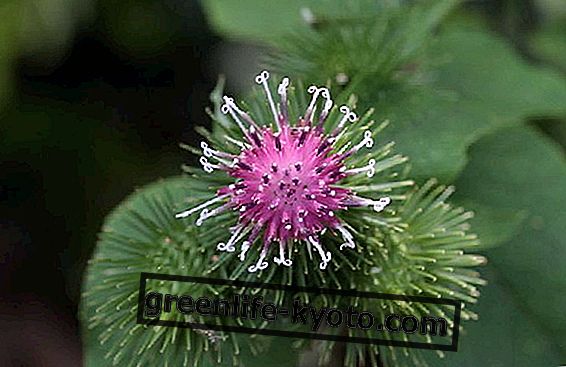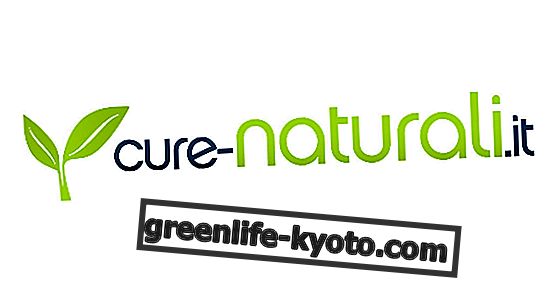
Natural remedies for seborrheic dermatitis act both for external use, with ointments and ointments to calm and regenerate damaged skin , and internally, with the use of natural supplements with anti-inflammatory action on irritated and damaged skin.
Seborrheic dermatitis is the consequence of an atrophy of the blood capillaries, which, by not bringing nourishment and oxygen to the tissues, cause a continuous cell death, called apoptosis .
Most often this atrophy is caused by adrenal catabolic hormones (adrenaline and cortisol), secreted by the body in response to stress conditions.
To confirm this, this disorder occurs in subjects suffering from chronic stress, and is aggravated (or presented) in conditions of acute stress; while if dermatitis occurs during the infant or adolescent fascia, there is a risk that it remains permanent for life.
What is seborrheic dermatitis
Seborrheic dermatitis manifests itself as a rash characterized by redness, scaling and itching of the skin of various body areas such as the scalp, the sides of the nose, the eyebrows, the eyelids, the skin around the ears and the mid-thoracic region.
More rarely, other sites may be affected: the navel, the armpits, the breast, the groin, etc. All these skin areas are characterized by a high concentration of sebaceous glands (which produce sebum), hence the adjective " seborrheic " of dermatitis.
The cause of this pathology is not yet clear. Factors suspected of contributing to the onset of this disorder are a genetic predisposition, anomalies of the immune system at the level of the skin, external environmental factors (humidity, temperature ...), exposure to detergents or irritants, hormonal imbalances, mood alterations .
Finally, seborrheic dermatitis can arise as a consequence of a fungal infection ( Malassezia furfur ), which attacks the scalp and face (around the nose and mouth, and on the eyebrows), atrophying blood vessels and causing oxidation to hair bulb level and hair loss.
Seborrheic dermatitis: what remedies?
Natural remedies for seborrheic dermatitis act on several fronts to counteract the effects of this skin disorder and intervening on its possible causes. They are, in fact, remedies that are used for internal use; and products to be used for external use that soothe scaling and redness, which dermatitis causes in the skin.
As with most low-grade skin disorders, nutrition plays an important role: a diet rich in saturated fats and sugars could, in some way, strengthen the condition, if seborrheic dermatitis is already underway.
It is a good habit to consume oily fish, rich in polyunsaturated fatty acids ( omega 3, in particular), which contribute, in part, to alleviating the problem.
Contact dermatitis: the causes and remedies
Natural remedies for internal use
- Borage oil : in the form of pearls, it is successfully used together with linseed oil, for all skin problems. The alpha linoleic acid contained in these plants significantly improves cell oxygenation and respiration, lubricates blood vessels and all body tissues, improving their permeability. It can also be used on the skin to combat skin inflammation, such as seborrheic dermatitis, eczema, acne and psoriasis.
- Crab apple : as regards the forms of seborrheic dermatitis identifiable as a psychosomatic disorder, once the pathology is diagnosed it is possible to prevent its worsening by using Bach flower remedies . In fact, Crab Apple is the floral remedy developed by Edward Bach for all skin problems of psychosomatic origin.
- Burdock : it is another natural remedy that favors the correct physiology of the skin, thanks to the purifying and decongestant properties made by sesquiterpenes, polyacetylene sulfonated compounds, caffeilchinic acids and inulins, which justifies its use in the treatment of dermopathies and is therefore defined an “ endocosmetic ". Furthermore, it stimulates liver and pancreatic function, favoring the elimination of toxins, especially when this disorder results from food intolerances.
Natural remedies for external use
In herbal medicine, ointments and ointments can be easily found to be used locally based on aloe vera, calendula, ginkgo biloba. Let's see how these functional substances act on damaged skin.
- Aloe vera : it has soothing and regenerating soothing properties for damaged skin: it promotes cellular regeneration, extinguishing redness and itching.
- Hypericum oil : it is used for its healing and emollient properties, capable of stimulating cell regeneration in the event of skin lesions, psoriasis, dry skin on the face and body, skin aging, bedsores, stretch marks, scars, and signs caused by acne.
- Echinacea : it is the immunostimulant plant par excellence. It strengthens the immune system by stimulating the skin's response to attacks by fungal infections (as in the case of seborrheic dermatitis when it is caused by Malassezia) viral and bacterial. In this case, associating tea tree oil also benefits from the antibiotic action of this essential oil. Even tea tree oil protects the skin from fungal, bacterial and microbial attacks, helping our natural defenses of the skin, thanks to its powerful broad-spectrum antibiotic action.
- Ginkgo biloba : acts on the atrophy of blood vessels, which causes seborrheic dermatitis, due to its capillary- protective and fluidifying properties of the blood . This plant, favoring a more efficient peripheral circulation, is also recommended in the topical treatment of capillary fragility and couperose.













